
Nature is full of patterns and shapes. You can find intricate spirals in sunflowers and galaxies, hexagons in bee hives and circles in rain drops and winds. Mathematical shapes like squares, prisms and rectangles are rare in nature. They may occur in some chemical crystal formations, but spirals and circles are much more common in the Universe.
Patterns are found in every known ecosystem, and the interface or boundary between two ecosystems is extremely rich in life - in complexity, abundance and variety. The interface between different surfaces, objects or ecosystems is known as the edge. It is where the air meets the water, the forest meets the grassland, the land meets the ocean, as well as the area above and below the frost line on a hill side and the zone around a plant root in the soil.
The edge is rich in life because it contains species typical of each side, such as those in a forest or grassland, and species unique to the boundary itself. Edges are very productive systems as there is more light available in these areas, a large variety of plants are found there, animals seek protection, food and shelter and make their homes there and the resources of two ecosystems are shared.
This is why permaculturists create designs with large amounts of edge and particular patterns; hence circles, keyholes and curved garden beds.
For example, as wind rises or is deflected upwards at the edge of a forest, it usually drops its load of dust, sand, leaves, water or seed.
Thus, the edge of a forest or heavily treed area is rich in nutrients and organic matter, and they are very productive.
Even so, there are some negative aspects to creating edge in gardens. For example, you can get weed invasion in newly planted beds in much the same way that you find in burnt and cleared bush or forest. The weeds (pioneers) quickly invade these areas.
Changing the shape of garden beds not only increases the amount of edge, and therefore production, it saves on watering. For example, circle garden beds are far easier and more economical to water with a sprinkler or spray system than a rectangular or square bed, as most sprinklers project a circular spray of water.

Figure 2.1 Changing the shape changes the amount of surface area or edge.
Convoluted garden beds as shown in the diagram below have a greater surface area or edge than the rectangular beds. More plants can be grown in these types of ‘folded’ garden beds. Common types of garden beds used in permaculture designs include:
(a) herb spiral. This garden bed is built like a pyramid, with a path or water line spiralling upwards. The circular base of the herb spiral is usually about two metres diameter and rises about one metre above the ground, but it can be larger and higher, or smaller than this.
A spiral is a useful pattern as the amount of edge and growing space increases as the garden bed climbs higher.
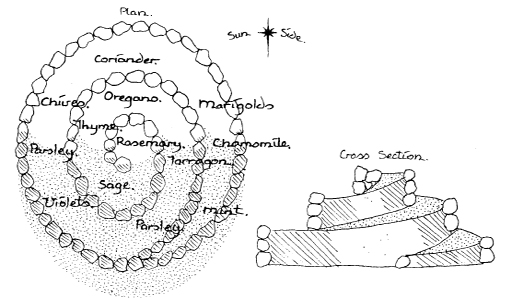
Figure 2.2 A herb spiral.
(b) circle. These are very common beds and they are usually between one to two metres diameter. If you make them too wide you cannot easily reach all plants, so these beds are deliberately small.
Some people make each circle garden bed a different theme. For example, planting tomatoes, basil and other Mediterranean herbs and vegetables as an Italian cooking theme, or having a circle bed for medicinal herbs, cooking herbs, teas and drinks (lemon grass, lemon verbena and lemon balm and so on) or pest repellent herbs. Herbs are good companions for vegetables.
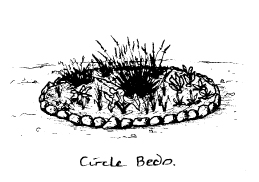
Figure 2.3 Circle garden beds are very common.
Unfortunately, circle beds don’t have a lot of edge, as circles have the least edge of any shape for their area of cover. We say that circles, and spheres generally, have the lowest surface area to volume ratio.
The other problem with a group of circle beds close together is that the space between them varies, making paths sometimes too narrow or too wide.
(c) keyhole. The “keyhole” can either be the path that you step into to reach your bed or the shape of the garden bed itself.
Keyhole paths allow easy-reach access to all plants.

Figure 2.4 Keyholes allow easy access to all parts of the garden bed.
(d) clipping and plucking beds. These types of beds contain vegetables that you can snip things from - maybe a leaf or flower - as you would for lettuce and nasturtiums. You can walk alongside plucking beds and harvest foods such as tomatoes, silverbeet, spinach, parsley, capsicums and many other useful foods. See Figure 2.5 which depicts a narrow plucking bed.
(e) narrow beds. Mainly designed and built for narrow garden places where you don’t have much room, but what you have can be effectively used to grow vegetables such as onions and chives.
(f) broad beds. Many summer crops such as melons and pumpkin require room to spread. Once the initial mounds are seeded and the vine crops start to grow, allow them to fill the area, as this helps reduce weed infestation.
(g) vertical. Small-sized gardens may have to utilise vertical growing space. Think about using fences or trellis for vines (grape, pumpkin, cucumber, squash), berries (soft fruit, such as boysenberries and raspberries) and peas and beans. Trellises can be used to provide shade and create suntraps. Trellises range from wooden lattice structures to wire strung up between poles to allow a vine or creeper to grow up and into a tree.
(h) raised garden beds. Not everyone is able to bend over gardening all the time -and who wants to anyway? Building a garden bed off the ground is a simple solution. You can build gardens on top of old, single, wire bed frames or box a garden with sleepers or concrete slabs. People in wheelchairs will be able to access and enjoy their gardens, and young children find it easier to work on these types of garden beds.

Figure 2.5 Narrow beds are ideal in small spaces. You can harvest from a plucking bed as you walk along the path.

Figure 2.6 Broad beds are good for melons and vine crops.
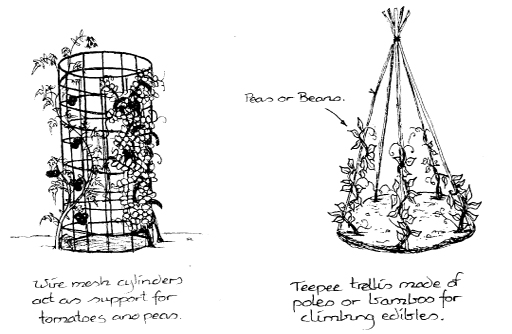
Figure 2.7 Use vertical growing space for greater food production.
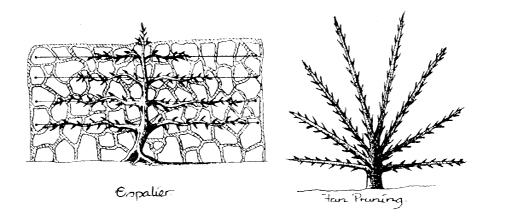
Figure 2.8 Espalier and fan pruning are techniques to utilise vertical and horizontal growth in fruit trees.

Figure 2.9 Raised garden beds can be built on any ground surface.
There is no limit to the diversity of plant and animal species that can be integrated in the terrestrial polyculture system, and the layout of the plants can vary also. For example, instead of planting in rows, with particular spacing, trees can be clumped one to one and a half metres apart, leaving available ground for interplanting.
Sometimes, orchard trees can be clumped. This technique is suitable for some nut and fruit trees, including coconut, edible palm species and banana. Planting pioneer leguminous trees, such as Acacia and Albizia spp., amongst the edible food crops further enhances the system. Underplanting your fruit trees with pest repellent herbs and other good companions makes these trees healthy and reduces the need for other types of pest control.

Figure 2.10 Underplant orchard trees with herbs and ground covers.
Water is very important in permaculture. Water systems can achieve greater overall protein production per square metre of water surface than the same area in land systems.
Even small ponds can produce a steady supply of edible foods such as watercress, water chestnuts, taro and water spinach (kang kong).
Some of the most productive ecosystems in the world are found at the land-ocean interface or edge. These, include mangrove swamps, which are on the land side of this interface, and coral reefs which are located on the ocean side.
Any aquaculture we develop needs to be set up like these ecosystems, with lots of edge, which not only contains plants and animals with commercial value, but a host of other organisms.
These are the basis of the many food chains that need to be developed and functioning if such a system is to work.
Unlike terrestrial polyculture, aquaculture polyculture should only involve a limited number of species. While, in principle, permaculturists would like to make complex ecosystems involving literally tens of different species, it becomes increasingly difficult to monitor and maintain such a system.

Figure 2.11 In polyculture aquaculture many species are grown together.
Simple polycultures involving four to six species (at the most) is the ideal that you should deliberately introduce.
Thus you could have some crustaceans in the bottom of the pond, one or two species of fish as middle and top dwellers and several plant species that the animals feed on or shelter in, or both.
Many of the famous Chinese polyculture systems use herbivorous fish. The raising of carnivorous fish adds greater costs of production, mainly in feed.
The rest of the ecosystem develops naturally. The microscopic algae and bacteria, and the macroscopic insects, plankton and other invertebrates, all appear shortly after the pond is conditioned.
Conditioning a pond or dam involves adding organic plant and animal matter to make a rich detritus which is the basis of most of the food chains that become established in the aquatic environment. Small ponds, such as tyre ponds and bath-size tanks, are not conditioned in this way.
To condition a pond, a rough guide is as follows. Approximate amounts are given for a particular dam size and volume, so you can determine your specific requirements for your dam or pond.
For a dam size of 50 m2 (e.g. 5 m × 10 m), volume = 100 m3 (depth average 2 m), break up and spread two bales of straw and add two wheelbarrow loads of animal manure evenly over the pond.
Within a week the water changes to a darker colour and there is evidence of living things. The dam must then be aerated, continuously if possible, but at least for two hours, four times a day for three or four days.
The water must be moved, drawing up from near the bottom and spraying it across the surface. The water becomes aerated at the surface.

Figure 2.12 The submersible pump inlet should point upwards so that it does not draw in detritus material from the bottom.
The water should start to turn a light green as algae become prolific. If mosquitoes toes are a problem, continue with aeration and water movement. If the water doesn’t become green, you may have to add a little more manure or some soluble phosphate fertiliser - about a tablespoon should be enough.
Once the pond or dam is conditioned in this way, you can then add the plants and animals to the system - butnot all at once. Plants first, especially the forage ones for the animals.
You may have to wait six months or more for the plants to become established before you introduce fish and crustaceans. These animals will devour, pull out and decimate plants that are not well established.
Don’t put lots of deciduous fruit and nut trees around the dam, as large amounts of organic matter falling into the waterway will quickly pollute the system and all living things will literally die overnight due to lack of oxygen.
When fruit or leaves fall into water, bacteria and fungi break them down. Large amounts of these organisms consume the small amounts of oxygen present in the water, especially at night when all living things respire and use oxygen. The pond life dies.
Oxygen levels are also dependent on water temperature. As temperatures increase the amount of dissolved oxygen decreases. Ponds and dams containing warm water may need regular aeration if plants and animals are present.
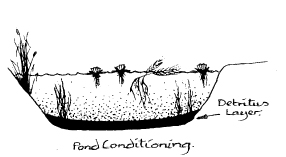
Figure 2.13 First condition a pond, then introduce plants and finally animals.
In small ponds, where the water temperature can easily change, the average water temperature is usually about three-quarters of the air temperature.
For example, if the air temperature is 30°C the water temperature might only be 24°C. This is important, as most freshwater aquatic animals will die if the water temperature rises to over 30°C for a day or two, sometimes less.
Edge in aquaculture is equally as important as it is for land-based polyculture.
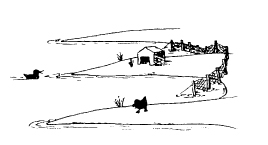
Figure 2.16 Fingers of land surrounded by water can be economically and easily fenced to reduce the impact of unwanted predators.

Figure 2.14 Hiding places are very important for territorial animals such as many freshwater crayfish species. Suspended, floating hides are used as protection sites when crayfish moult.

Figure 2.15 Change the shape of a dam to increase the edge and, therefore, the production of the system.
Ponds or dams don’t have to be the typically-found square or rectangular shape. Adding curves and bends to the edges of waterways increases the surface area, and again, greater production and carrying capacity in the system is the result.
The chinampa system of Mexico and SE Asia, for example, is one of the most productive human-made aquaculture systems. Here, thin strips of water and land are interwoven to provide lots of edge for bird and other animal habitats, as well as for food production.
The edges of waterways are important development areas for many organisms. Fish, crustaceans, molluscs and amphibians all breed and grow in the shallow waters of waterways.
Reeds, rushes and sedges, and a host of other macrophytes, are found growing on or near the water’s edge. These plants provide food for both aquatic and land ecosystems as well as shelter and breeding space and material for birds and other organisms.
The concept of maximising the edge in design is further illustrated by the shapes of windbreaks, houses and other structures which are discussed later in other chapters.